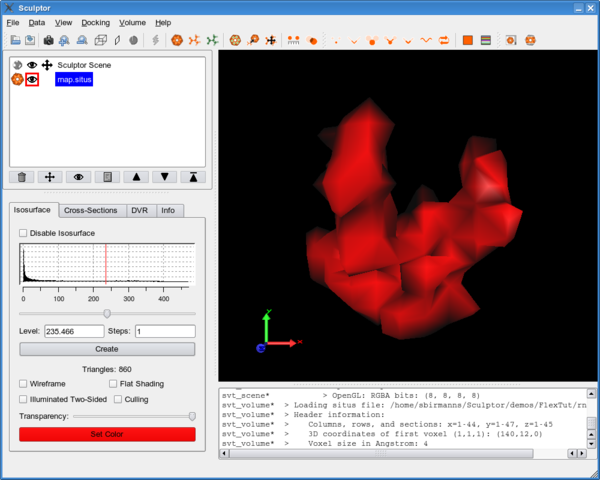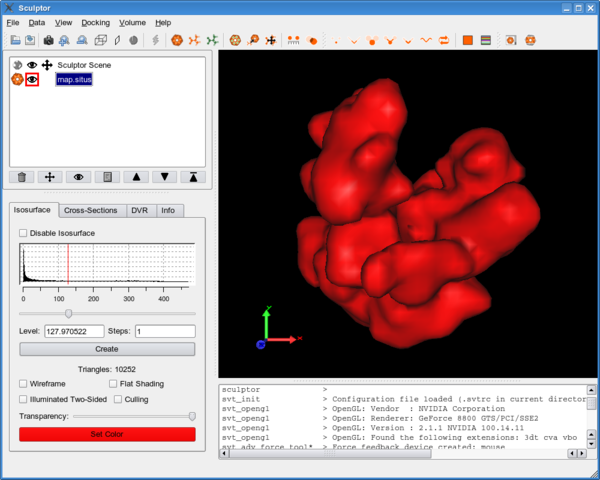| Tutorial - Visualization of Volumetric Data |
|
Sculptor can load MRC/CCP4 and Situs volume files, can generate "synthetic" volumes from atomic structures ("Structure->Blur") and provides a variety of visualization techniques for voxel-based data. Data setPlease download the following file (use right- click and select the "Save Link As" option):
Load DataPlease load the map from "rnap.situs" using "File"->"Open" menu-item. You should now see a new document being listed in the document list in the top-left part of the main Sculptor window. Please click on the new document to open the dialog with which one can manipulate the visual rendering of the volume.
At this step your Sculptor window should now look like this:
Iso-SurfaceThe perhaps most popular visualization method for volume files is to extract and render an iso-surface. An algorithm computes a triangular mesh, which is created wherever the volume crosses a user-selectable threshold level. The algorithm is computationally rather inexpensive, so that for small to medium sized volumes the threshold value can be manipulated interactively by clicking into the histogram widget in the dialog. For large volumes the geometry calculation can take a significant amount of time (and memory!), in these cases please type a carefully selected threshold into the "Level" text field and hit return.To accelerate the calculation one can also increase the step size to 2 or even 3. Please be aware that the algorithm will then only examine every second or third voxel, which might lead to a significant simplification of the surface of your system. In the case of rnap, the isosurface calculation is almost instantenous on concurrent computers, so please play a little bit with the different levels by using the histogram widget.
Below the "Create" button one finds a couple of check-boxes to fine-tune the iso-surface rendering. The wireframe mode allows to see through the surface, which is useful especially for multi-resolution modeling applications, where a atomic structure is placed inside the low-resolution envelope. |

